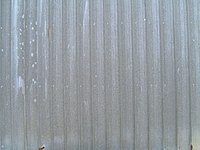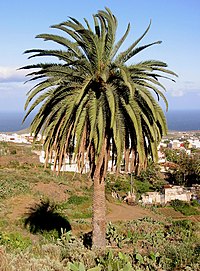Key:material
 |
| Description |
|---|
| Describes the main material of a physical feature. |
| Group: properties |
| Used on these elements |
| Documented values: 3 |
| Status: de facto |
| Tools for this tag |
|
material=* – describes the main material of a physical feature.
It is most commonly used to describe the material of monuments, memorials, statues, walls, fences, but can be used for any other physical object except those listed below, which use other tags:
- Building façade →
building:material=* - Roof of a building →
roof:material=* - Insulation of power lines →
insulation:material=* - Main surface of roads →
surface=*for values such assurface=asphaltorsurface=mudmaterial=*can be still used as an extra detail – for examplesurface=unhewn_cobblestonematerial=graniteis finesurface=graniteand similar should ideally be avoided.- For
surface=paving_stonesthere ispaving_stones:material=*, which can also be used. - Some mappers use
surface:material=*instead.
- What is inside, for example in a storage tank →
content=*.
Common values
| Key | Value | Description | Photo |
|---|---|---|---|
| material | wood | 
| |
| material | concrete |  
| |
| material | metal | Unspecified |
 
|
| material | steel |   
| |
| material | stone | 
| |
| material | reinforced_concrete | 
| |
| material | plastic |  
| |
| material | brick |  
| |
| material | bronze | 
| |
| material | granite |  
| |
| material | brass | 
| |
| material | glass |  
| |
| material | sandstone |   
| |
| material | rock | material=stone
|

|
| material | aluminium | 
| |
| material | copper |  
| |
| material | soil | man_made=embankment.
|

|
| material | marble |  
| |
| material | limestone |  
| |
| material | tufa |  
| |
| material | dry_stone | 
| |
| material | andesite |  
| |
| material | adobe | 
| |
| material | iron | 
| |
| material | cast_iron | 
| |
| material | wrought_iron |   
| |
| material | sheet_metal | ||
| material | ceramic | ||
| material | terracotta | ||
| material | sand | ||
| material | plaster | 
| |
| material | slate | 
| |
| material | bamboo | 
| |
| material | metal_grid | Metal grid (depending on the model also called wire mesh or wire grid, comparable is also perforated metal) is a specific type of material=metal. It is often used for seats and backrests of benches, sometimes also for outdoor tables.
|

|
| material | basalt | 
| |
| material | weathering_steel | 
| |
| material | tyres | 
| |
| material | rammed_earth | 
| |
| material | trachyte | 
| |
| material | greywacke | 
| |
| material | fieldstone | 
| |
| material | muschelkalk | 
| |
| material | palm_leaves | 
| |
| material | epoxy | ||
| material | gabion | ||
| material | Masonry is not a material. Please use other values. | ||
| material | user defined | All commonly used values according to Taginfo |
This table is a wiki template with a default description in English. Editable here.
Using material tag for detailing surface info
surface=granite and similar should ideally be avoided as it fails to distinguish between surface=sett and surface=unhewn_cobblestone and surface=paving_stones[1][2]
But, if someone wants to provide a detailed info for a surface, material=* can be used as an extra detail. This is friendly both for data consumers looking for extremely detailed info and for more general-purpose ones. For surface=paving_stones there is paving_stones:material=*, which can also be used.
surface=sett material=granite or surface=paving_stones paving_stones:material=granite are completely fine and much more useful tagging than surface=granite that loses useful info.
For example, the distinction between surface=unhewn_cobblestone and surface=paving_stones is very important for bicycle routing, while distinguishing between marble surface and granite surface and concrete surface is of lesser importance.
surface=metal material=steel is preferable over surface=steel as it allows more general-purpose data consumers to process data without failing as soon as someone will add even more detailed info about surface.
